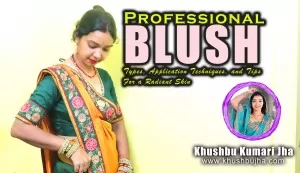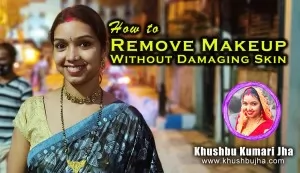Kajal in Professional Makeup: The Timeless Eye Enhancer
Explore the significance of kajal in professional makeup. Learn about its types, uses, and application tips to enhance and define the eyes.

In the universe of professional makeup, few products carry as much cultural significance, emotional value, and versatile functionality as kajal. From ancient times to today’s modern beauty kits, kajal has always held a sacred place in eye makeup. Its deep black intensity not only highlights the eyes but also speaks volumes in terms of tradition, elegance, and power.
What Is Kajal?
Kajal, also known as kohl, is a soft eye pencil or gel that is used to outline the eyes. Originally made using soot, ghee, and herbal ingredients, kajal has evolved into a safe, dermatologist-tested cosmetic that enhances the eyes with bold definition. In professional makeup, it is often used to create depth, intensity, and drama — especially for bridal, editorial, and evening looks.
Types of Kajal
- Pencil Kajal: Easy to use, ideal for beginners, and widely used in quick makeup applications.
- Gel Kajal: Highly pigmented and creamy in texture, often used for smudged or smoky eye effects.
- Stick Kajal: Traditional Indian style with rich color payoff, generally herbal-based.
- Roll-On Kajal: Used in classical looks or for clients seeking an Ayurvedic formulation.
- Waterproof Kajal: Perfect for long wear, especially in weddings, photoshoots, or emotional events.
Why Kajal Is a Must-Have in Professional Makeup
- Defines the Eyes: Kajal frames the eyes, making them appear larger, more expressive, and captivating.
- Multi-Use Product: Can be used on the waterline, lash line, or as an eyeshadow base for smoky eyes.
- Cultural Resonance: Especially in Indian, Middle Eastern, and Southeast Asian makeup, kajal is a symbolic part of traditional beauty rituals.
- Quick Glam: A simple swipe can instantly elevate a bare face into something stunning and sharp.
How to Apply Kajal Like a Pro
- Prep the Eyes: Cleanse the eye area and apply a primer to prevent smudging.
- Line the Waterline: Gently pull down your lower eyelid and apply kajal to the waterline.
- Upper Lash Line: Use kajal as eyeliner above your upper lashes for a bold finish.
- Smudge for Drama: Use a small brush to smudge the kajal for a smoky effect, especially on the lower lash line.
- Seal It: Set the kajal with a matte black eyeshadow to increase longevity.
Professional Tips for Best Results
- Use black kajal for a classic look or colored kajal like green, blue, or brown for modern flair.
- Layer kajal under eyeshadow for more depth in bridal or editorial makeup.
- Pair with mascara and a tightline eyeliner for high-definition photoshoots.
- For sensitive eyes, use kajal with natural ingredients like almond oil or camphor.
Popular Kajal Brands in Professional Kits
- Lakmé Eyeconic Kajal
- Maybelline Colossal Kajal
- Kiko Milano Lasting Gel Kajal
- MAC Modern Twist Kajal Liner
- Faces Canada Magneteyes Kajal
- Plum NaturStudio Kajal
Ingredients to Look For
Choose kajals with skin-safe ingredients that are ophthalmologist-tested:
- Castor Oil: Nourishes lashes and prevents irritation.
- Camphor: Cools the eyes and reduces puffiness.
- Vitamin E: Protects the delicate skin around the eyes.
- Jojoba Oil: Prevents dryness and adds smooth application.
When and Where to Use Kajal in Makeup
Kajal is most commonly used in the following makeup styles:
- Bridal Makeup: Bold kajal lines enhance the eyes and photograph beautifully.
- Everyday Looks: Soft lines on the lower lash line create a defined, awake look.
- Smoky Eyes: Used as a base and blended out with eyeshadow.
- Cultural or Traditional Makeup: Kajal is a staple for festive occasions and classical dances.
Common Mistakes to Avoid
- Using kajal on oily skin without setting it — leads to smudging.
- Applying too thickly on the waterline — can make eyes look smaller.
- Not sharpening pencil kajals regularly — may lead to uneven lines.
- Using expired kajal — always check the shelf life to avoid eye infections.
Final Thoughts
Kajal is more than just a cosmetic — it’s a piece of art, emotion, and history. In the hands of a professional makeup artist, kajal becomes a storytelling tool — defining not just the eyes but the entire expression. Whether you want soft romance or powerful intensity, kajal is the magic wand that brings your vision to life. Keep it in your kit, treat it with respect, and watch how it transforms even the simplest look into something unforgettable.













